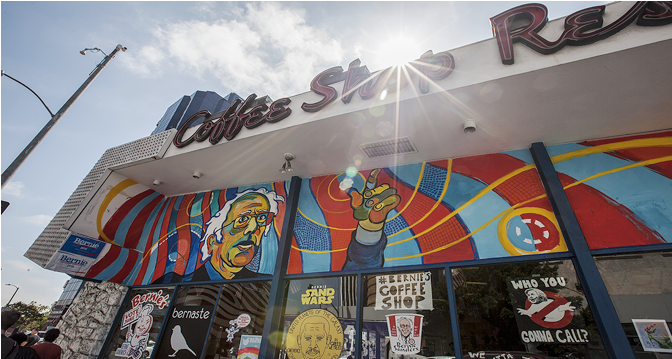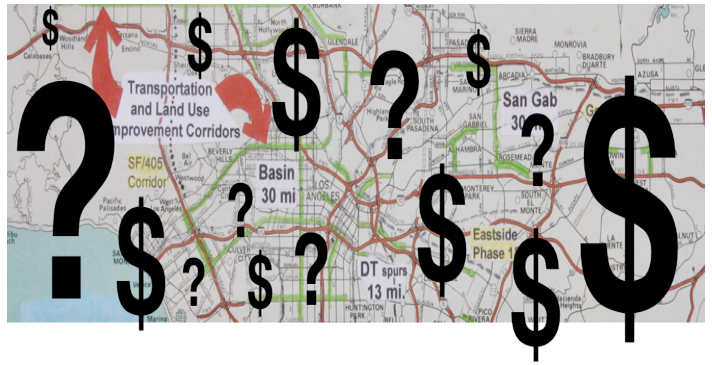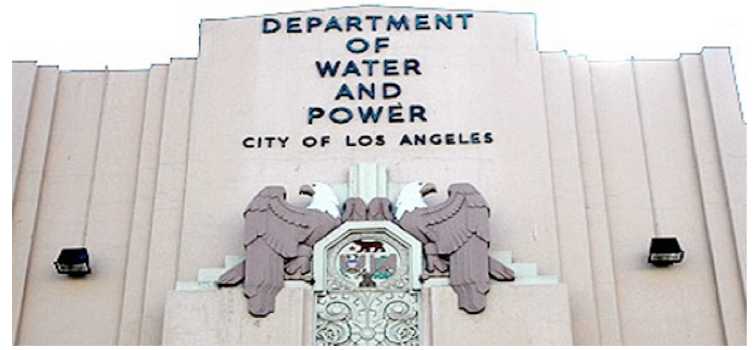Action of LA’s Police Commission is a Crime
RANTZ & RAVEZ--Recent news reports and conservations with Los Angeles patrol officers illustrate just how far out of touch the leaders of Mayor Eric Garcetti’s Los Angeles Anti-Police Commissioners are with LAPD Offices around the city. From the San Fernando Valley to San Pedro and from West Los Angeles to the Eastern portion of Los Angeles the abandoned feeling and desperation of officers is alarming.
The Anti-Police Commissioners led by President Matthew M. Johnson and followed by rabble rousing Cynthia McClain-Hill and Sandra Figueroa-Villa are to blame for this disconnect. This may be part of the reason recruitment efforts are down at the LAPD. With a budget for 10,000 officers, the LAPD currently has 8,837 officers on the books. That is 163 officers short of the authorized strength. The number of officers does make a difference in crime reduction and police response times.
The Anti-Police Commissioners are criticizing and faulting dedicated LAPD Officers for engaging in police actions against a growing criminal element that is forcing LA’s crime rates to explode. Showing more concern about restricting the enforcement action of LAPD Officers than addressing the criminal behavior of those that prey on innocent victims is the ill conceived and tragic direction of the majority of the current Anti-Police Commission.
Commissioner Johnson set his vision and two goals as Commission President. Number one was the reduction of crime. He has totally failed in that category. Crime is up and continues to rise with reduced numbers of arrests. The October 8, 2016, LAPD citywide violent crime and arrest profile clearly illustrates the frightening numbers. Total violent crimes are up a shocking 36.4% over 2014.
These include Murder, Rape, Robbery and Aggravated Assaults. Property crimes are also on the increase. They include Burglary, GTA, and Burglary from vehicle and personal/other theft. These are up 21.3% when you compare 2016 to 2014. These alarming crime statistics clearly reflect the lack of effectiveness of Commissioner Johnson and his leadership in reducing crime in Los Angeles.
The second category is Johnson’s goal of minimizing the use-of-force incidents. That goal is also missing the mark. With his lack of support and encouragement for the officers that carry out the difficult task of keeping Los Angeles safe, use-of-force incidents continue against those individuals that commit crimes and violently resist arrest.
The number of officer-involved shootings rose 60% in 2015 compared to 2014. 87% of those shot by an officer in 2015 had either a gun or some other type of weapon at the time of the shooting. Many of those shot by officers showed signs of mental illness.
When an officer encounters an individual with a gun or knife or any other type of weapon, the officer attempts to defuse the situation. When all else fails, there are few options left for that officer.
When the Anti-Police Commission attempts to meet on their regular scheduled Tuesday, the loud mouths and Anti-police activists in the audience are permitted to disrupt the meeting by screaming and acting like spoiled children to gain attention for their mission of protesting the enforcement of law in Los Angeles.
Their mission is very simple and has gained the support of the weak and spineless members of the Anti-Police Commission led by Commissioners Johnson and McClain-Hill. During a recent Commission meeting, a women made direct death threats against LAPD Officers. The Commission did nothing to address this Terrorist Threat against LAPD Personnel. The Cowardly acts and a lack of support for LAPD personnel by the Anti-Police Commission are at the root of this matter.
When uniform officers encountered a crazed women with a knife who failed to follow their commands and directions and charged at them forcing them to either run away and hide or face the attack, the Commission discounted the recommendation of Chief Beck who found that the shooting was in policy and found that the officers use of deadly force was appropriate.
The message from the Commission is to run and hide and avoid any encounter that may result in the use of force. I asked officers if it is worth their career and livelihood for themselves and their family to take that risk. Even with the lack of support from the majority of the Anti-Police Commission, some offices are continuing to serve the public and face the risk of negative consequences of trying to “Protect and Serve” the people of Los Angeles.
In recent conversations with LAPD Patrol Officers with 7 months to over 20 years of service, the concern is the same. While the Anti-Police Commission is undermining the actions of the officers and attempting to weaken the enforcement efforts of the LAPD, the officers are receiving support from the people of Los Angeles who appreciate what they are doing to try and make Los Angeles a safe place for everyone.
It is interesting to note that the Commission is not addressing the criminal element in the city that is forcing the crime numbers to increase. They are only pushing to reduce the effectiveness of the police and use of force incidents. In reality and on the streets of Los Angeles, there are increasing numbers of people being released from prison and turning to the law abiding residents of Los Angeles to fill their pockets with stolen items or assault them causing bodily harm.
The recent deaths of three-law enforcement officers shot and killed in Southern California clearly illustrates the point. First there was Los Angeles County Sheriff Sergeant Steve Owen a 29-year veteran of the Sheriff’s Department.
The second and third police officers were shot and killed in Palm Springs. Officer Gil Vega a 35 year member of the Department preparing for retirement in the next two months and Lesley Zerebny who had 1 ½ years of service who just returned to duty after the birth of her child. How tragic for the families of the law enforcement personnel who have died in the line of duty. Black bands will be displayed on the badges of law enforcement personnel and their memory will remain with their family, friends and colleagues.
To date, there is a 55% increase in gun deaths to Law Enforcement personnel across the country. With these increasing numbers, the Anti-Police Commission should be more concerned about the safety of officers then the loud mouths Anti-police activists that are trying to cripple our police officers.
 It would be a refreshing change for the members of the Anti-Police Commission to address those who carry guns and commit crime to comply with the orders of officers who are professional and dedicated to protecting ALL the people of Los Angeles. A continuing life of crime is where many who are released from prison end up.
It would be a refreshing change for the members of the Anti-Police Commission to address those who carry guns and commit crime to comply with the orders of officers who are professional and dedicated to protecting ALL the people of Los Angeles. A continuing life of crime is where many who are released from prison end up.
It does not really matter if the person is a hardened murderer, robber, burglar, rapist, and car thief or of crazed mind from drugs, they are all responsible in one way or another for their actions. Holding the police back from protecting the public they are sworn to protect and serve is a constant crime the Anti-Police Commission is committing.
With the continuing coddling of the Anti police activists by the Anti-Police Commission that are attempting to tear down the LAPD and with encouragement by the Anti-Police Commission for those that are undermining the effectiveness of the LAPD, any injury sustained by an officer from a suspect is at the hands of the Out of Touch, and Cowardly members of the Los Angeles Anti-Police Commission.
(Dennis P. Zine is a 33-year member of the Los Angeles Police Department and former Vice-Chairman of the Elected Los Angeles City Charter Reform Commission, a 12-year member of the Los Angeles City Council and a current LAPD Reserve Officer who serves as a member of the Fugitive Warrant Detail assigned out of Gang and Narcotics Division. Disclosure: Zine was a candidate for City Controller last city election. He writes RantZ & RaveZ for CityWatch. You can contact him at [email protected]. Mr. Zine’s views are his own and do not reflect the views of CityWatch.)
-cw




 But the impact on Wells Fargo’s financial statements was minimal, only $2.4 million. By itself, that would not create any stir on Wall Street, certainly not enough to push the stock price upwards.
But the impact on Wells Fargo’s financial statements was minimal, only $2.4 million. By itself, that would not create any stir on Wall Street, certainly not enough to push the stock price upwards. 





 Let’s start at the beginning. In 1934, Clinton Lathrop, Sr. and Jean Lathrop purchased the land on which the property at 5303 ½ Hermitage sits. (Photo left.) This property now contains four residential units.
Let’s start at the beginning. In 1934, Clinton Lathrop, Sr. and Jean Lathrop purchased the land on which the property at 5303 ½ Hermitage sits. (Photo left.) This property now contains four residential units. 





 And they were. On January 10, 2014, the men who murdered Matthew
And they were. On January 10, 2014, the men who murdered Matthew  Everyone knows how wrong I think Los Angeles City Charter Amendment Measure RRR:
Everyone knows how wrong I think Los Angeles City Charter Amendment Measure RRR: 





 Ellis, at age 43, is also a leader in state Democratic circles. She is recording secretary of the state party's African American Caucus and a member of the party's Finance Committee.
Ellis, at age 43, is also a leader in state Democratic circles. She is recording secretary of the state party's African American Caucus and a member of the party's Finance Committee. 












